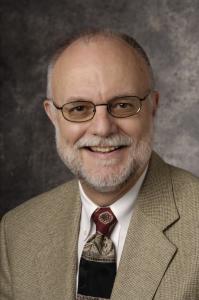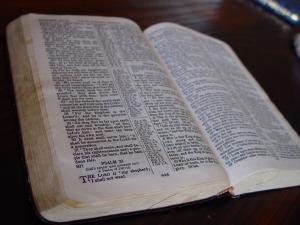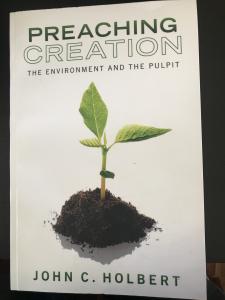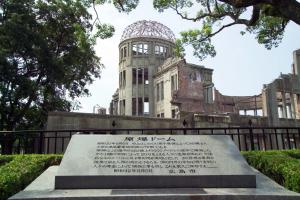 My wife and I actually visited Hiroshima, Japan over 30 years ago, but the memory is still quite fresh. That infamous building hulk was very close to ground zero of the world’s first military atomic bomb, a picture that has appeared again and again in countless journals, books, and magazines in the 73 years since the bomb was dropped. That picture came back to my mind with renewed horror and freshness as I read the monumental account of just how the US came to create the bomb in Richard Rhodes Pulitzer Prize-winning story, The Making of the Atomic Bomb, from 1986. I had long wanted to read this book, but when I visited Los Alamos to lead a retreat for a church in that city, I went to the excellent museum that chronicles the creation of the device, and after my visit there, bought the book in a nearby museum about the history of the city. I immediately began to read the massive tome, and just recently finished it in our mountain New Mexico cabin, perhaps 50 miles from Los Alamos and 200 miles from the site of the bomb’s first test.
My wife and I actually visited Hiroshima, Japan over 30 years ago, but the memory is still quite fresh. That infamous building hulk was very close to ground zero of the world’s first military atomic bomb, a picture that has appeared again and again in countless journals, books, and magazines in the 73 years since the bomb was dropped. That picture came back to my mind with renewed horror and freshness as I read the monumental account of just how the US came to create the bomb in Richard Rhodes Pulitzer Prize-winning story, The Making of the Atomic Bomb, from 1986. I had long wanted to read this book, but when I visited Los Alamos to lead a retreat for a church in that city, I went to the excellent museum that chronicles the creation of the device, and after my visit there, bought the book in a nearby museum about the history of the city. I immediately began to read the massive tome, and just recently finished it in our mountain New Mexico cabin, perhaps 50 miles from Los Alamos and 200 miles from the site of the bomb’s first test.
I was born in 1946, just one year after the bomb was first tested and then dropped on two Japanese cities, Hiroshima and Nagasaki, in August of 1945, hastening the end of the brutal and destructive World War II. Or at least that is often the reason given for dropping the bombs on what were essentially civilian targets, rather than merely demonstrating their power in some other way. The result of the bombs’ explosions was the immediate deaths of 200,000 people, the further radiation deaths of tens of thousands more, and untold numbers of cancers created by the radiation’s lingering effects over the succeeding decades. On top of all that slaughter, there is the continuing reality that we Americans were the first and only users of this technology for the killing of human beings; and I hope we pray daily that we will remain thoroughly unique in that regard. The Hiroshima bomb yielded the equivalent of some 17,000 tons of TNT. That figure, enormous as it is, is dwarfed by today’s bombs whose yield is measured in the millions of tons. Many nations from Israel to Pakistan to Russia to France to India to Korea to China, possess these bombs, and others are surely anxious to join the nuclear club.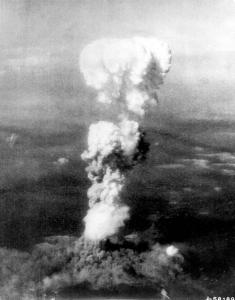
I have lived my entire life under the shadow of that terrifying mushroom cloud. I used to have vivid dreams of what it would be like when one of those things dropped out of the sky on my town. I sensed, even as a grade schooler, that our “duck and cover” exercises were not going to be very helpful in the face of such awesome energy released, not to mention the lingering horror of the radiation. When John Kennedy played chicken with Nikita Khrushchev’s missiles heading for Cuba, the world was on the brink of a catastrophe that could well have ended life on the earth. As recently as this past year, President Trump publically threatened Kim Jong Un of North Korea with “fire and fury” unmatched in human history if he continued to claim that he could, whenever he so desired, launch an ICBM that could reach Los Angeles, the city in which I live. The image of the cloud invaded my mind once again.
Rhode’s fine book gives the history of the making of this weapon in wonderful and staggering detail. I admit readily that I, a thoroughly non-scientific guy, found the first 200 pages of the book hard going, since it catalogued with great precision just how the various scientists came to first believe and then made possible a controlled fission reaction, and then were able to transfer that learning into a compact delivery source, Fat Man (the Hiroshima bomb) and Little Boy (the Nagasaki device). In effect, that journey took fewer than 7 years from reactor to explosion, surely one of science’s more rapid and transforming activities in human history. At first, there were several reputable scientists who believed strongly that the ability to split the atom was impossible, and if it could be done, no energy would be released. They, as we now know, were completely wrong. And then there were a few who thought that such atom splitting should simply not be attempted; the risks were too great, including, a few imagined, the end of the world’s atmosphere, consumed by atomic fire. They were proved wrong, too. In the end, the military won out; the bomb was needed, they said, to end the war and to avoid the possible slaughter of a half million American soldiers, or more, in an invasion of the Japanese homeland. Rhodes enumerates the tenor of the time very well. The Japanese had demonstrated over and over that they would never surrender, sacrificing their troops in famous kamikaze attacks on ships where pilots became flying suicidal missiles, giving their lives for the emperor. On Iwo Jima, of the 20,000 Japanese soldiers who were dug in to defend the island, barely 1500 gave themselves up to the Americans. The image of every man, woman, and child in Japan, armed in some way, however crudely, fighting to the death, was much on the minds of American military planners in 1945.
I have long believed, and still believe, that some sort of demonstration blast could have worked as a deterrent, but Rhodes suggests otherwise with his reconstruction of 1945 military thinking. Also, the scientists themselves were anxious to make a test of the power of their bomb and what it could do. They saw its power all too well and witnessed all too horribly what it could do to actual humans. In perhaps the most famous reaction of all to the testing and use of the atomic bomb, Robert Oppenheimer, a ferociously brilliant physicist and organizer of the Los Alamos group that constructed the bomb, gazed at the rising mushroom cloud over the New Mexican desert and quoted from the Bhagavad Gita, which he read in its original Sanskrit. “I am become death, the destroyer of worlds.” And so we became on that fateful day.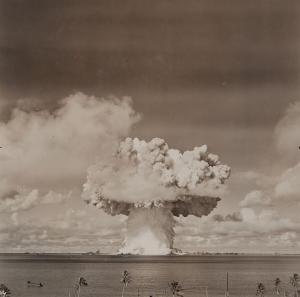
What do preachers do with all that? We are in the business of life, not death. We proclaim the one who came to bring life, and that abundantly. “O death, where is thy sting,” sang the great apostle, but we have determined that death is still very much alive in the Bomb. “Mutually assured destruction,” we call our way of living with one another, which is about as far from “love your neighbor as yourself” as it could possibly be. The Bomb is all too real, and if not ubiquitous, nearly as universal as anyone can stand. May the time come, O God, when the mushroom cloud is banished from every eye, and the “destroyer of worlds” is replaced by the God of life for all.
(Images from Wikimedia Commons)


